How to Find Competitor’s Keywords and Analyze It
One key way to conquer the search market is by conducting competitors' keyword analysis. Businesses can gain valuable insights into their industry by analyzing the keywords that competitors use to rank in search engines.
However, finding and analyzing competitor keywords can be daunting for businesses without the right tools and techniques. In this article, we will explore how to find and analyze competitor keywords plus tips on how to use this information to enhance your marketing efforts.
Identifying Competitors
Competitors' keyword identification is a critical step in the process of analyzing keywords and developing a comprehensive SEO strategy. But how do you go about identifying your digital rivals? Here are several methods for competitor identification and tools.
Keyword Research
One of the most straightforward ways to identify competitors is through keyword research. By identifying the keywords that your target audience is searching for, you can discover who else is targeting those same keywords.
Using tools such as Google Keyword Planner, you can enter competitor websites to see their keywords. From this, you will know whether the keywords targeted same as yours. However, this action may take some time, you have to find another tool to support your search.
In this matter, you can use Sequence Stats to track your targetted keywords first, and then find the true competitor through it. How so? This tool will suggest you a list of competitors that target the same as yours.
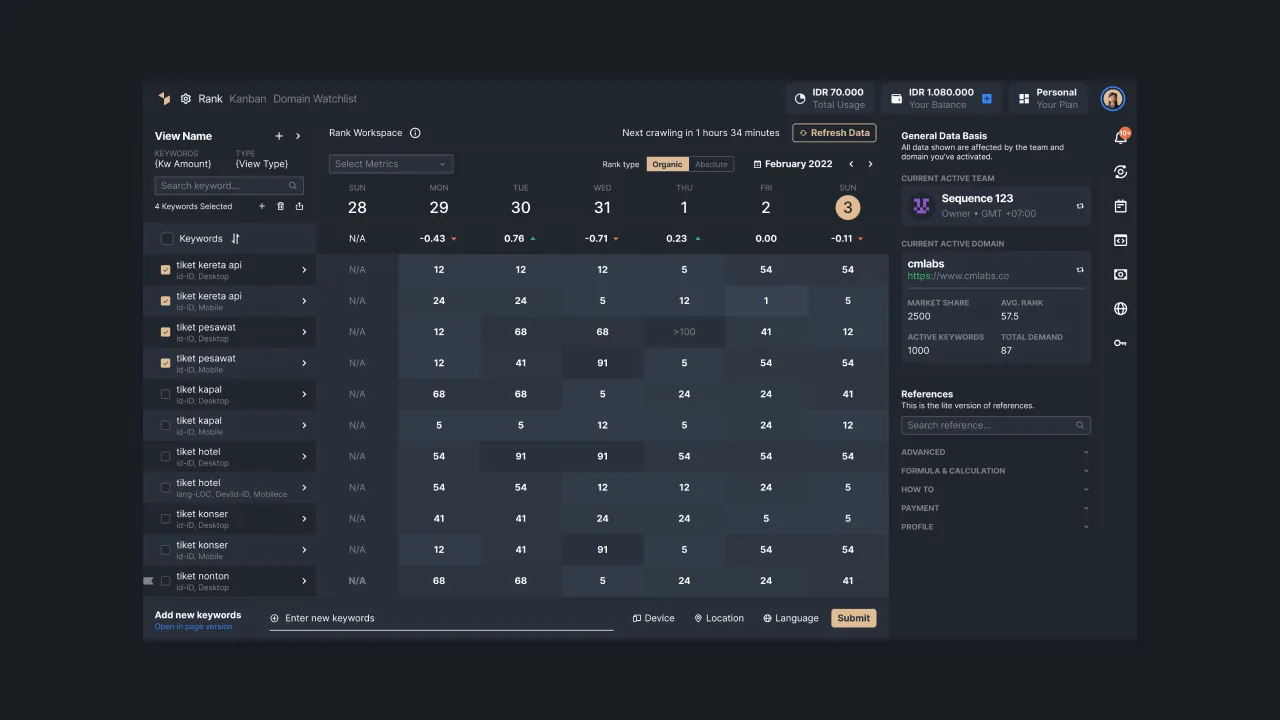 |
|---|
| Picture 1: Keyword rank tracker display in Sequence Stats |
You can group your keywords into Views to analyze them separately. From each View, the competitor list will be different. Thus, you can see who your competitors are in a certain keyword group.
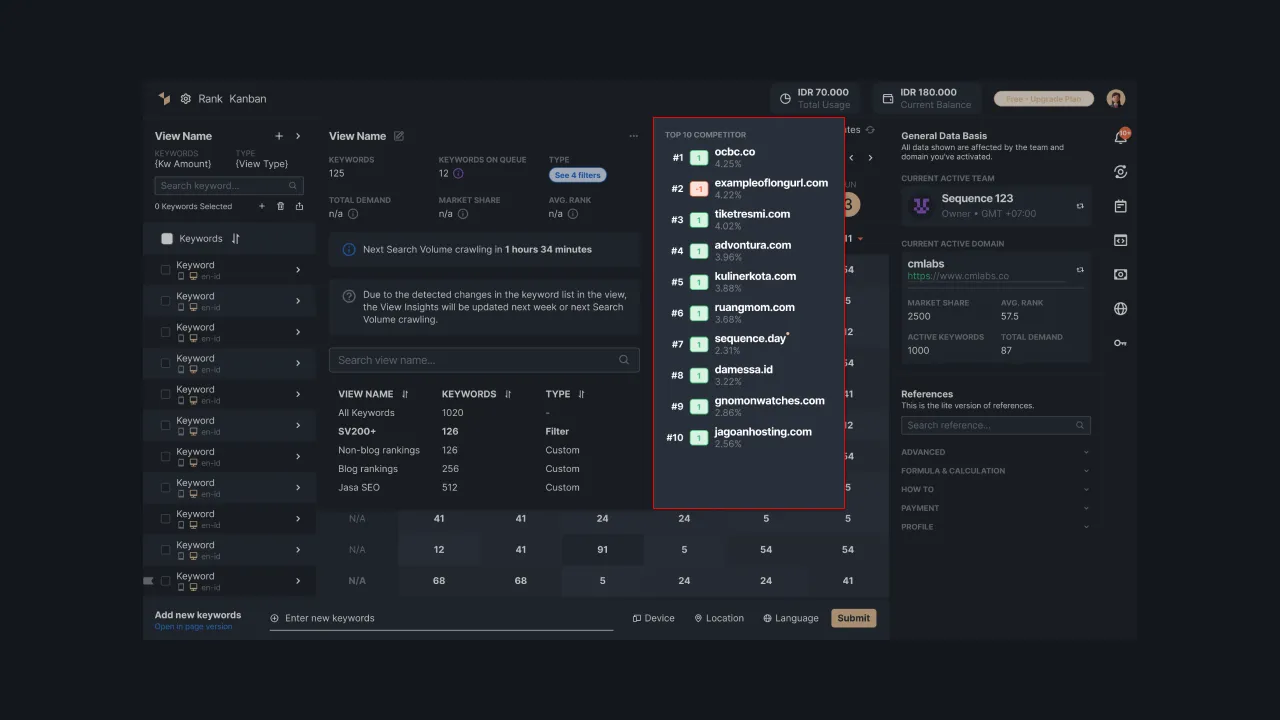 |
|---|
| Picture 2: Top 10 competitors based on a certain keyword group. |
Once you have found the true competitors, you need to monitor their performance. It includes the competitors' keywords, pages, market share, and even brand position. Lucky you, it can be done in one tool only, Sequence.
First, add the list of competitors to the Domain Watchlist in Sequence Stats. The system will gather their data and present it to you with an understkamuble visualization.
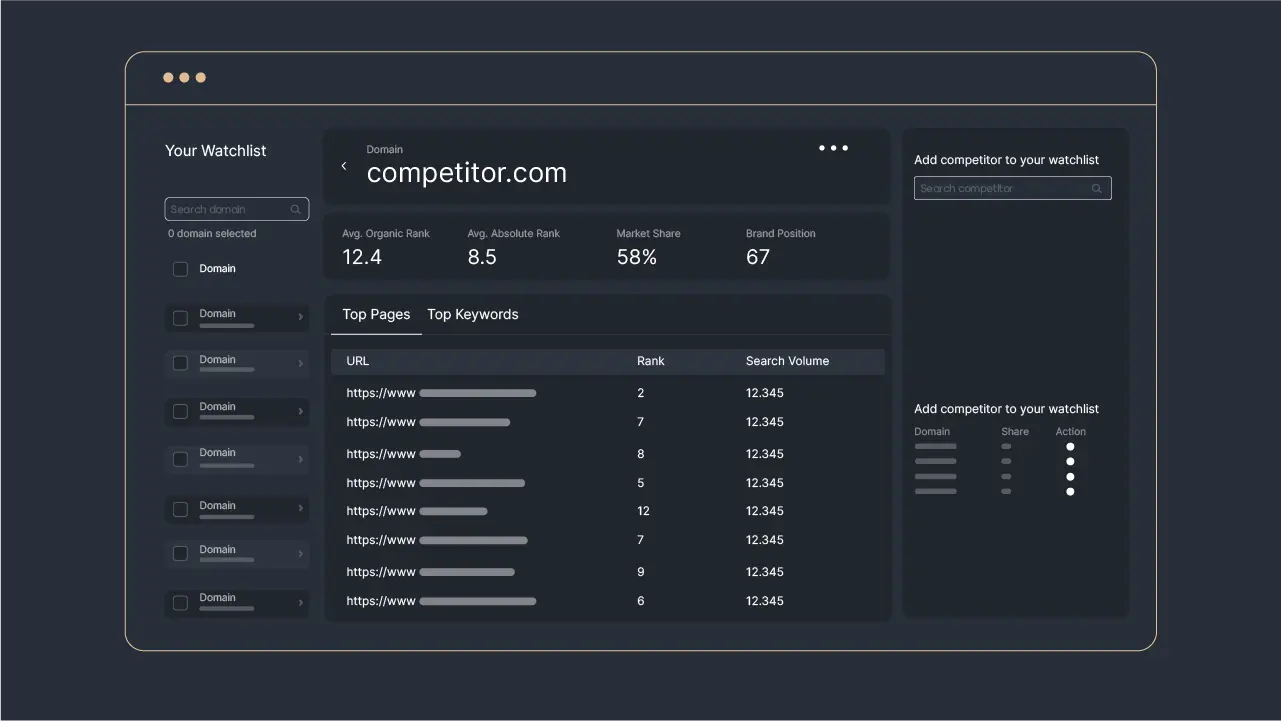 |
|---|
| Figure 5: Domain Watchlist page in Sequence Stats |
Within the watchlist, you can see the detail of each competitor's data. Get yourself to know the top keywords and top pages of the competitor with ease.
Next, go to the Stats feature and you will find the statistics of important metrics, including your competitors’. Brand position, market share, impressions, and other important metrics are recorded here.
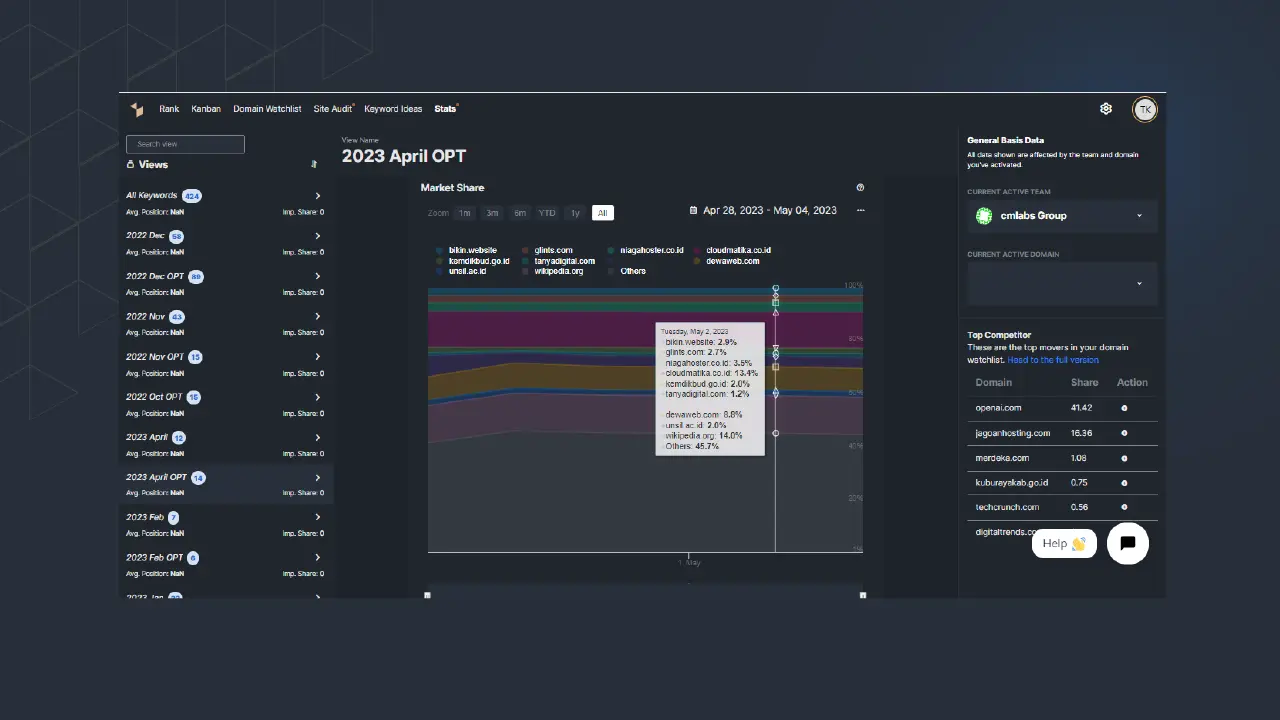 |
|---|
| Picture 4: Stats feature that shows the market share and list of websites as the competitors |
That is how to conduct competitor keyword research through Sequence. Keyword competitor analysis will be the next step after identifying competitors.
Google Search Analysis
Conducting a Google search for your primary keywords can also help you identify your competitors' keywords. By searching for your keywords and analyzing the results on the first page of Google, you can get a sense of who else is targeting those terms.
Make sure to take note of both organic search results and paid search results. This way, you can classify which one is your search competitor.
Social Media
Social media platforms such as Facebook, Twitter, and LinkedIn can be valuable sources of information about your competitors. By searching for your target keywords on these platforms, you can discover businesses and individuals who are active in your industry.
Activating Google Alerts
Google Alerts is a free tool that allows you to set up alerts for your target keywords. When new content is published that includes your target keywords, you'll receive an email notification. This can help you stay up to date on what your competitors are doing and identify new competitors as they emerge.
Analyzing Competitors Keywords
After identifying your competitors and doing competitors' keyword research, it is time to use the data and analyze how it could help you improve the business. Here is how to analyze competitor keywords and the factors to consider.
Content Analysis
First, Analyze the content on your competitors' websites to see how they are using their keywords. Look at their titles, headings, and meta descriptions to see how they are incorporating their target keywords.
Pay attention to the length and format of their content and the types of keywords they are using (e.g., long-tail keywords, informational keywords, commercial keywords). Also, check their top-performing pages with Sequence Stats Domain Watchlist.
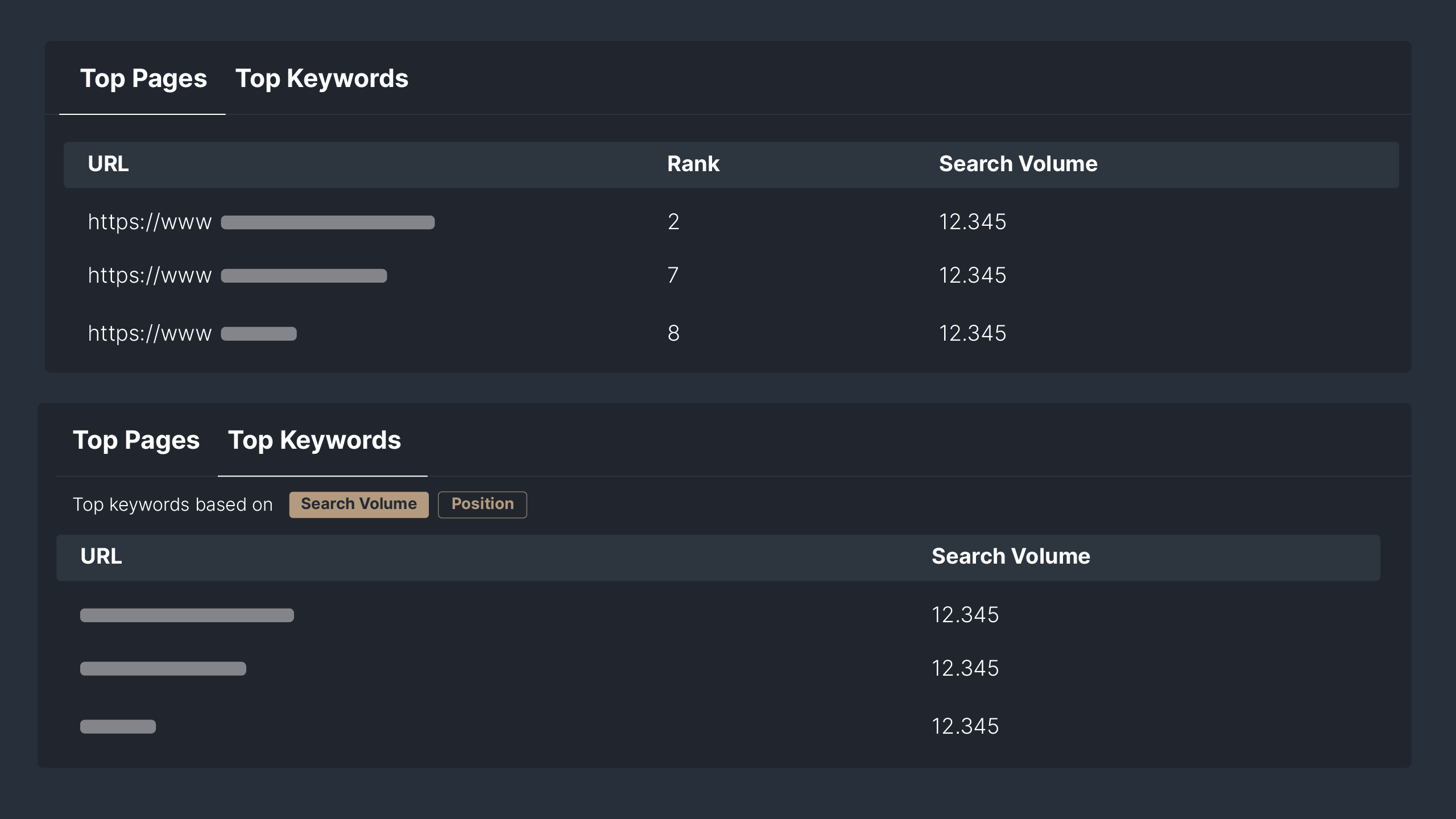 |
|---|
| Picture 5: Top pages of competitor tracked in Sequence. |
Keyword Difficulty Analysis
Consider the difficulty of ranking for the keywords you are analyzing. Some keywords may be highly competitive and difficult to rank for, while others may be easier to target. Use Keyword Research Tool to find the data about search volume, keyword difficulty, YoY changes, and others.
Search Volume Analysis
Pay attention to the search volume of the keywords you are analyzing. Keywords with high search volume may be worth targeting, but keep in mind that they may also be more competitive.
Identify Keyword Gaps
Compare your keyword list to that of your competitors. This will help you identify keywords that your competitors are ranking for that you are not. This can help you discover new keyword opportunities and identify areas where you can improve your SEO strategy.
Next, develop a plan to target the identified keywords. This may involve creating new content, optimizing existing content, or building new backlinks to your site.
Factors to Consider When Analyzing Competitor Keywords
- Relevance: Ensure that the keywords you are targeting are relevant to your business. Irrelevant content may harm your search ranking
- Intent: Consider the intent behind the keywords you are targeting. Some keywords may be informational, while others may be commercial. Make sure you are targeting the right type of keywords.
- User behavior: Analyze the behavior of users who are searching for your target keywords. Are they looking for specific products or services? Are they comparing prices or looking for reviews?
By considering these factors, you can use the information you've gathered from competitor keyword research to develop a targeted and effective SEO strategy
Wrap Up
In conclusion, keyword competitor analysis is important to discover new opportunities and improve SEO strategy. It's important to use the right tools and techniques to gather and analyze this data,
With a targeted and data-driven approach to competitor keyword research and analysis, you can optimize your website for the right keywords, drive high-quality traffic to your site, and achieve your business goals.
Register to Sequence Stats to have an assisted competitor keywords analysis now!